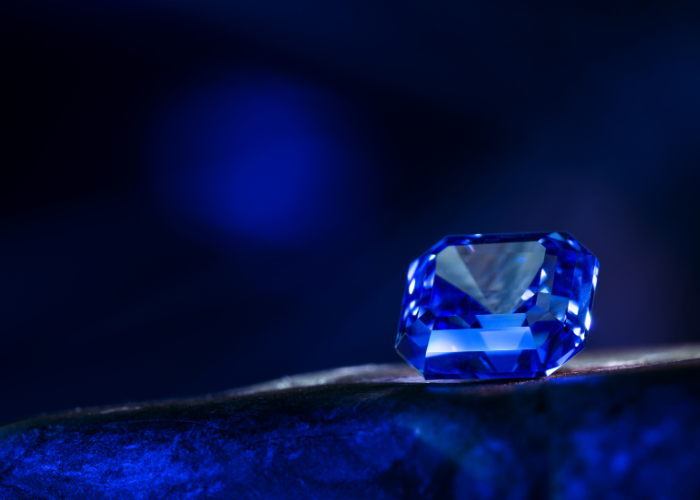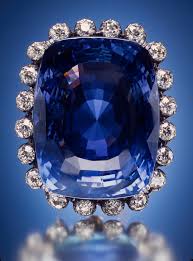
Let’s be very clear about one thing: the sapphire, as one of the four established precious gemstones, is not just a beautiful piece of mineral. No. It represents a significant investment, standing shoulder-to-shoulder with the diamond , emerald and the ruby—from which it is chemically derived, by the way. This inherent link to the Corundum family is fascinating, I think, but the market value is driven by that renowned, profound blue color. It just commands attention.
The stone has always signified authority. Wisdom. Nobility. So, for anyone seriously engaging with this market, whether you’re a professional buyer, an appraiser, or perhaps making a significant private acquisition—say, a September birthstone piece, or just an investment—you simply must move past the aesthetic. It is non-negotiable. You have to understand the objective criteria. You see, successfully navigating this market means applying very rigorous, internationally recognized standards across four main pillars: Color, Clarity, Cutting, and Treatment Disclosure.
The following guide attempts to lay out these parameters, with a focus on practical application and the realities of valuation.
I. Color Assessment: The Unequivocal Value Driver
We start here because, frankly, color is everything. It is the single most critical factor—and yes, I mean the single most critical—influencing a sapphire’s financial and aesthetic worth. Color evaluation is complex and requires judging Hue, Tone, and Saturation simultaneously.
A. Hue and Variety Context
- The Primary Hue: Highest value, without exception, is always assigned to sapphires that exhibit a pure blue hue. The presence of secondary colors—even subtle green or violet overtones—will always, always cause a reduction in the final price. This purity is what dictates market demand.
- The Fancy Sapphire Market: It is crucial to remember the nomenclature: the name “sapphire” encompasses Corundum of any color. If it’s red, it’s a ruby; otherwise, it’s a sapphire. This includes the various colors, which we call Fancy Sapphires: the pinks, the yellows, the greens. These stones, while often beautiful, typically trade at a lower per-carat value than a fine blue stone, though they have their own collector market, of course.
- The Padparadscha Distinction: Now, this is where things get genuinely rare. The Padparadscha sapphire—defined by a delicate, exquisite blend of pinkish-orange to orangey-pink—commands a truly exceptional, massive premium. Its classification is highly subjective and frequently contested, meaning certification is absolutely paramount here. It’s often the rarest sapphire you will encounter.
B. Tone and Saturation: The Critical Balance
- Tone (Lightness/Darkness): The ideal, high-value zone is unequivocally the medium to medium-dark tone. If a stone is too light, it presents as ‘watery’ or ‘washed out’—and that is a serious devaluation. Conversely, if it is too dark—what we call ‘inky’ or blackish—it suffers from ‘extinction,’ where light cannot return, and that significantly reduces its brilliance. You must seek the balance.
- Saturation (Purity/Vividness): This speaks to the intensity. The most desirable stones possess a vivid or strong saturation. Any presence of grey or brown modifiers, often manifesting as large, dull zones, reduces saturation dramatically and cripples the stone’s market appeal. A truly fine sapphire must maintain that vividness under all standard lighting conditions. This is what separates a good stone from a great one, you see.

II. Clarity Evaluation: Understanding Inclusions as Proof of Origin
It is a mistake to apply diamond clarity standards to sapphires. It just doesn’t work. Sapphires are naturally expected to contain internal characteristics, called inclusions. This is the geological reality of their formation. Often, the deep color itself acts as a natural camouflage for these features.
- Clarity Categorization: Gemmological institutes appropriately classify sapphires as Type II stones, recognizing that minor inclusions are the industry norm.
- The “Eye-Clean” Requirement: The commercial floor is ‘eye-clean.’ That is, no inclusions should be immediately obvious to the unaided, naked eye. We must strictly avoid inclusions that compromise the stone’s actual structure, such as large fissures or fractures that extend to the surface, because that is simply a durability risk.
- Inclusions and Rarity (A Paradox): And this is fascinating: specific inclusions can increase value. I’m talking about the minute rutile needles, known as “silk,” which, when properly oriented, scatter light and create that famous velvety appearance associated with the legendary Kashmir sapphires. Frankly, if a sapphire appears perfectly clean, I start to become suspicious. That often suggests a synthetic origin.
III. Cutting, Weight, and The Focus on Color
The philosophy behind cutting a sapphire is different from a diamond. It is about maximizing color return and achieving optimal weight retention, not about achieving maximum fire.
- Color Optimization: The cutter must orient the crystal to minimize color zoning (streaks of different colors) and ensure the stone’s best hue is presented face-up. A quality cut guarantees even light return and actively works to avoid those large, dark ‘extinction’ zones that simply ruin the stone’s beauty.
- Preferred Shapes: You predominantly see oval and cushion cuts. This is because these shapes retain the maximum weight from the rough stone while simultaneously maximizing color saturation. They are practical choices.
- Carat Weight & Value: Listen, everyone wants a large stone, but quality must always supersede size. This is not negotiable. A smaller, vividly colored, finely cut sapphire will always, always command a higher per-carat price than a large, dull, or overly dark specimen. Remember, large, clean sapphires are exceptionally rare compared to large diamonds.
IV. Treatment Disclosure: The Defining Investment Metric
I cannot stress this enough: The treatment status of a sapphire is the single most important metric affecting its final market price and long-term investment viability. Full, transparent disclosure is the ethical and legal standard.
- Natural (Untreated/Unheated) Sapphires: This is the absolute peak. They possess perfect color and clarity purely from natural geological processes. They are staggeringly rare—less than 10% of the market. Consequently, stones certified as ‘No Indication of Heating’ secure an incredible premium, often three to five times the price of an otherwise comparable heated stone.
- Heat-Treated Sapphires: This is the industry staple. It is a stable, permanent, and accepted enhancement (over 90% of the market). Controlled heating improves the stone’s natural color and clarity. This is the baseline for commercial and fine jewelry, offering the best quality-to-price ratio for the majority of buyers.
- Aggressive Treatments (Diffusion, Filling): Buyers must exercise extreme caution here. Treatments like lead-glass fracture filling or aggressive beryllium diffusion are often utilized to salvage low-quality material. These can result in superficial color layers or seriously compromised durability. Stones with such treatments hold dramatically reduced value and should generally be excluded from any serious investment portfolio. You must verify what you are buying.
V. Origin and Certification: The Foundation of Trust
A. Geographic Origin and Prestige
The location of the mine certainly adds prestige and can justify a price premium:
- Kashmir: The historic pinnacle. Their stones possess that prized, velvety “Cornflower Blue.” They command the absolute highest prices due to their legendary status.
- Ceylon (Sri Lanka): Highly respected, known for bright, brilliant blues. These are widely available and represent a consistent, reliable market choice.
B. The Absolute Necessity of Certification
Given the complexity of treatments and origins, independent certification from a recognized laboratory (GIA, SSEF, etc.) is completely non-negotiable. This document is your guarantee. It objectively verifies the stone’s characteristics, confirms natural origin, and most importantly, definitively states the presence or absence of treatment. Relying on a seller’s internal paperwork is insufficient for any serious acquisition.

In conclusion, purchasing a sapphire demands rigorous due diligence. You must balance the artistic beauty with scientific verification. The goal is to obtain a stone where Hue, Tone, and Saturation are perfectly balanced, the clarity is commercially high-grade, and the treatment status is fully confirmed by the appropriate gemological authority. That is how you secure a valuable stone.
